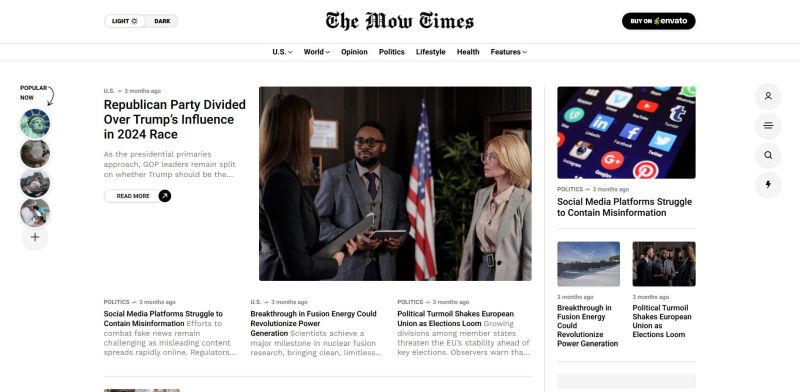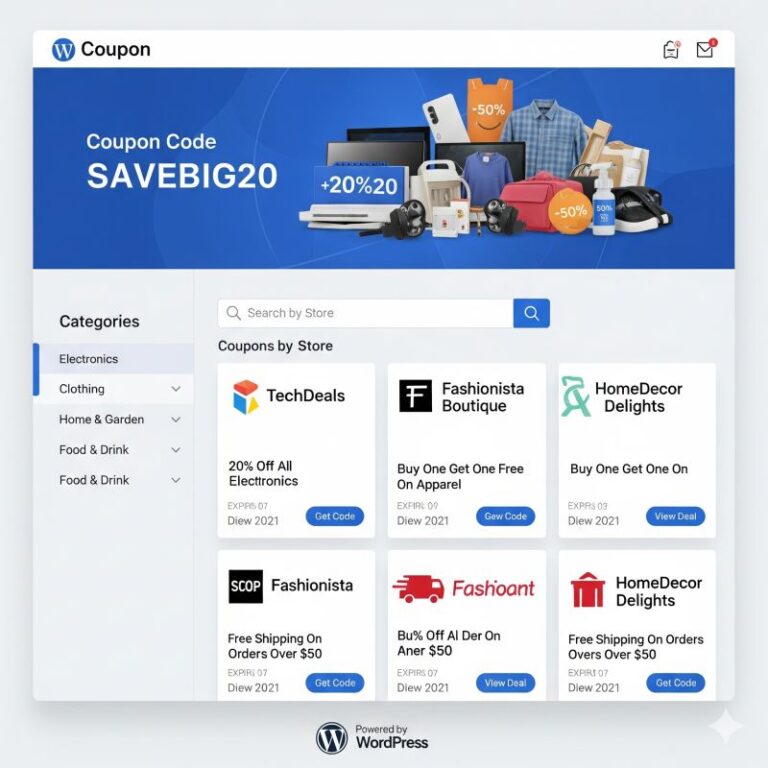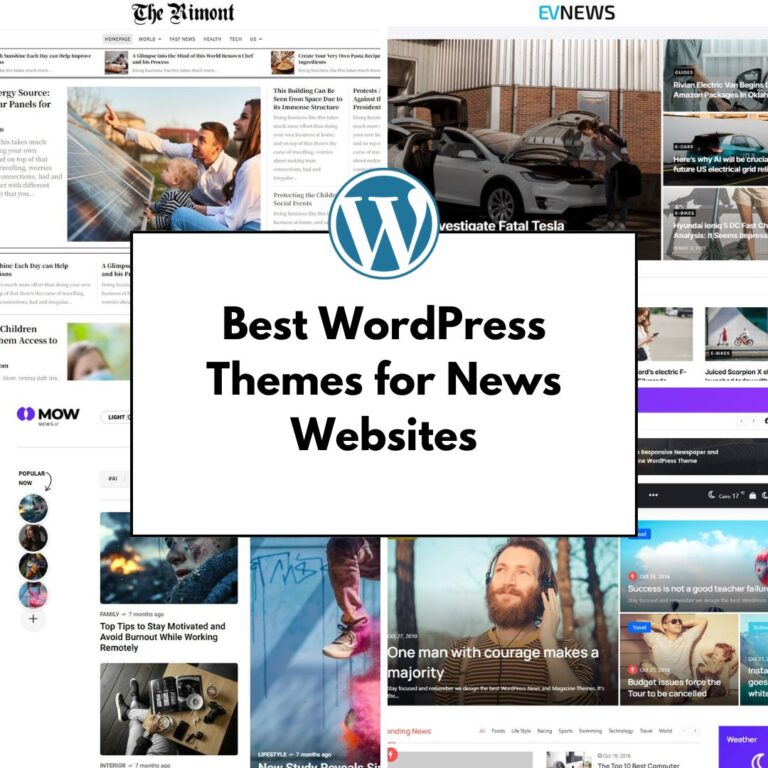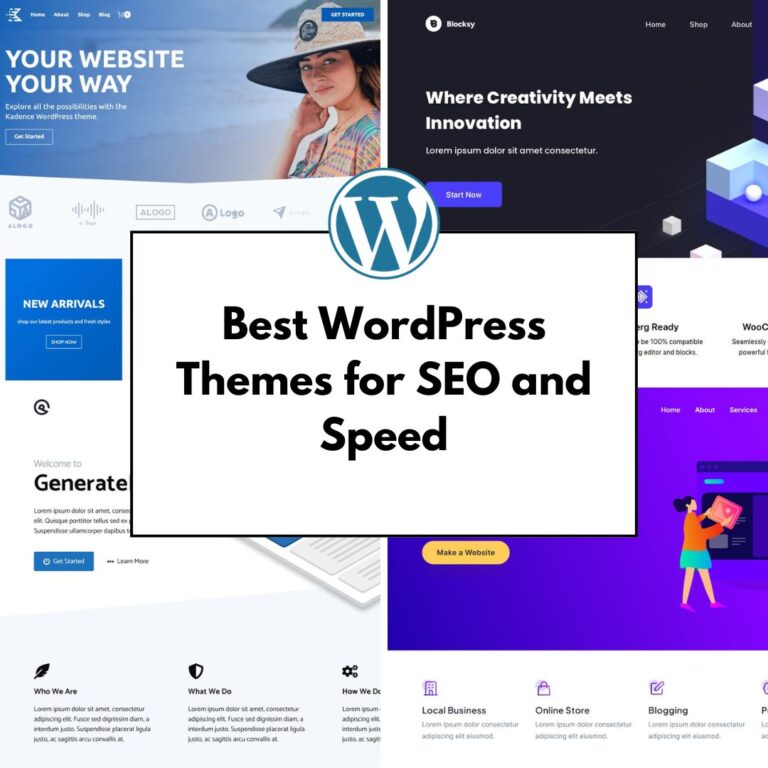If you’ve been navigating the digital wilderness in search of a WordPress theme tailored for serious bloggers and modern content creators, chances are you’ve stumbled upon Mow. I did too – and what began as a casual curiosity quickly turned into a thoughtful exploration. After investing real time in dissecting its strengths, quirks, and underlying philosophy, I’m ready to share not just a review, but a deeper perspective – one rooted in observation, experience, and a sincere attempt to answer a question many creatives are silently asking: “Can this theme carry the weight of my voice?”
Mow presents itself not just as another visually appealing layout- it positions itself as a platform for storytelling. It’s sleek without being sterile, feature-rich without becoming bloated, and versatile enough to bend toward your niche without losing its own identity. Whether you’re crafting in the fashion world, writing about technology, curating travel memories, building a food journal, or reporting on business trends, Mow promises to meet you there – at that intersection between creativity and usability.
What sets it apart, at least at first glance, is the intentionality in design. It doesn’t just want your content to look good – it wants your site to feel “alive”. Speed is at its core, ensuring performance doesn’t lag behind aesthetics. The theme architecture respects your readers’ time, your content’s importance, and your desire for a site that moves as quickly as your ideas do.
Despite being relatively new to the WordPress ecosystem, Mow is already making ripples – an emerging favorite among those who care deeply about the craft of publishing. But it’s not just about trends or early buzz. What’s striking is the way Mow seems to anticipate the needs of content creators who don’t necessarily have a developer’s toolbox but still want professional, polished results.

As you can see from the above image, it uses the Redux Framework for options.. It simplifies the complex without diluting the power of customization. And that – more than any single feature – is what makes it stand out. It’s for the blogger who wants to grow into a brand, for the writer who understands the power of first impressions, and for the creator who believes their content deserves a home as refined as their vision.
Let’s peel back the layers and dive into the mechanics – what works, what doesn’t, and who Mow is truly built for.
Key Features
When evaluating a WordPress theme, I don’t just skim through the feature list — I ask myself what those features enable. What do they unlock for creators like us, who are balancing vision with functionality, aesthetics with performance? In the case of Mow, what initially appears to be a long list of technical specs reveals something more meaningful: a well-architected toolkit for digital storytellers.

At the surface, Mow boasts over 20 – specifically 24 – pre-built demos. But these aren’t just design templates; they’re springboards. Each demo is curated for a distinct niche – from gaming to real estate, food to photography, science to travel – offering you not only a layout but a contextual starting point. That means less time wrestling with structure and more time crafting your message. It’s a subtle shift from building to publishing, and it matters.
The integration with Elementor deepens that promise. Mow doesn’t just cater to developers or designers – it empowers non-coders to shape their site with clarity and confidence. The drag-and-drop interface becomes an extension of your creative process. It eliminates friction and restores flow. Whether you’re building your first blog or revamping a mature publication, you’ll find that this kind of design freedom accelerates momentum without compromising precision.
Then there’s the mega menu system – more than just navigation, it’s a framework for reader orientation. On content-heavy platforms, organization is king. A cluttered user experience is a fast route to high bounce rates. Mow’s menu solution ensures that every reader knows exactly where to go next, visually and intuitively.
Aesthetically, Mow is attuned to the modern web. Its light and dark mode toggle isn’t a gimmick – it’s a nod to the evolving preferences of users who demand both beauty and accessibility. A single click shifts your entire experience, catering to late-night readers or those simply seeking visual comfort.
And beneath the visuals lies a performance engine engineered for visibility. Mow’s codebase is clean, optimized, and built with SEO in mind. Page speed, structure, and responsiveness are all tuned to meet Google’s best practices. This isn’t just technical talk – this is about discoverability, retention, and trust. The faster your pages load, the longer visitors stay, and the more authority your site commands in the eyes of search engines.
For bloggers and creators who thrive on content diversity, Mow supports multiple post formats – from immersive image galleries and embedded videos to cleanly styled quotes and standard articles. This flexibility allows you to vary your storytelling techniques without sacrificing design consistency.
Layout-wise, Mow doesn’t trap you in rigid structures. It offers flexible layouts like grid systems, masonry designs, classic blog streams, and a rich selection of homepage layouts. These are pre-validated patterns designed for readability and engagement. And yet, you’re not locked in – you’re free to remix, tweak, and experiment until your content feels right in its visual skin.
Typography, often overlooked, is treated with the importance it deserves. With access to 800+ Google Fonts, Mow invites you to define a typographic voice that aligns with your brand identity. The spacing, rhythm, and readability of your content will feel intentional – not accidental.
Header styles are another subtle but powerful tool in the arsenal. With four elegant options to choose from – and the ability to design your own – Mow gives you control over first impressions. This, paired with custom widgets like author boxes, trending posts, and social integrations, helps you construct not just a website but a personal ecosystem.
Monetization isn’t an afterthought either. Mow’s built-in ad placements are strategically considered. You can weave monetization into your content architecture – off-canvas banners, inline post ads, header spots – all without disrupting the user experience. It understands that attention is valuable, and treats it with care.
And for those extending their digital footprint into commerce, Mow’s WooCommerce compatibility is a serious advantage. Selling digital products, merch, courses, or subscriptions is frictionless. It allows your blog to evolve into a full-fledged business platform without switching ecosystems.
Engagement features like video support, post reactions, voting systems, and custom interactivity help close the loop between content and community. Mow doesn’t just let you publish; it invites your audience to respond. That kind of interaction builds emotional investment – the foundation of brand loyalty.
Its advanced posts widget is another quiet powerhouse, giving you fine-grained control over how your content is displayed, filtered, and ranked. Whether you’re spotlighting trending posts, curating editor’s picks, or highlighting the latest content, you can do it all with editorial precision.
Perhaps most importantly, all of these features are centralized. Mow’s global settings panel in the WordPress dashboard brings a level of administrative elegance rarely seen in themes. Whether you’re adjusting fonts, setting ad positions, defining color palettes, or enabling social features, every decision is made in one place – streamlined, logical, and empowering.
In essence, Mow isn’t just a theme – it’s a platform built for expression, expansion, and excellence. It recognizes that today’s content creator wears many hats: writer, curator, editor, strategist, and entrepreneur. And it offers the tools to support each of those roles, with sophistication and substance.
User Experience
A truly exceptional theme isn’t just a pretty design. It’s not enough to look good – it has to feel right. It should remove friction, anticipate needs, and elevate both the creator’s process and the reader’s experience. Mow, from what I’ve seen, is deeply rooted in this philosophy. It doesn’t just promise a good-looking website – it promises a seamless, human-centered journey, for both the one building the site and the one visiting it.
For the site owner – the storyteller, the entrepreneur, the editor-in-chief – Mow offers more than convenience. It offers liberation. The integration with Elementor means you’re not bogged down by code or technical constraints. You’re free to build with instinct, to move elements around like puzzle pieces until the whole picture feels right. This drag-and-drop freedom isn’t just about simplicity – it’s about empowerment. It closes the gap between vision and execution.
The control panel reinforces this sense of ownership. From typography to layout, color palette to social settings, every adjustment is made within a thoughtfully organized dashboard. One-click demo imports are less about speed and more about creative momentum – they give you a functioning foundation in minutes, so your energy can go where it truly belongs: into creating meaningful content.
But Mow’s UX story doesn’t end at the admin panel. It extends with equal care to the reader – the person whose attention is fleeting, whose expectations are high, and whose loyalty must be earned, not assumed.
Here, Mow leans into restraint to be user-friendly. The design is minimalist, not sterile – clean, but emotionally inviting. The absence of clutter is not just an aesthetic choice, it’s a strategic one. It says, your content matters most. No distractions, no noise – just a quiet stage for your words, images, and ideas to perform. This clarity of presentation invites trust, and trust leads to attention.
Speed, of course, is part of the experience. Not just in raw load times, but in how fluidly the site behaves. Transitions feel natural. Pages appear before hesitation sets in. And this performance isn’t a luxury – it’s an expectation. Readers are not patient. Mow knows this. And it respects their time.
Responsiveness is handled with equal precision. Mow doesn’t just scale – it adapts. Whether it’s a widescreen monitor, a tablet held in portrait mode, or a phone gripped in one hand during a commute, your site retains its integrity. No zooming. No pinching. No broken formatting. The experience is seamless across devices because that’s where most content is consumed now – in the in-between spaces of everyday life.
And then there’s the light/dark mode toggle. At a glance, it might seem cosmetic. But in practice, it’s a subtle act of empathy. It gives readers control over how they experience your site. Late at night, early in the morning, in low-light environments – this small toggle respects context. It invites longer visits, deeper engagement, and more return traffic because it feels better to use. On short, it can contribute to an enhanced user experience
Interactive features like reactions and voting elevate the site from a static experience to a dynamic conversation. They give readers a voice. They allow people to respond in small but meaningful ways – ways that make them feel seen, heard, acknowledged. In an age where engagement is everything, these features aren’t extra – they’re essential.
Ultimately, Mow’s approach to user experience is quiet, almost invisible. And that’s the point. The best UX doesn’t draw attention to itself. It disappears, leaving only the message, the moment, the connection. In a digital world crowded with noise and distraction, Mow offers something rare: a sense of calm, clarity, and control. For the creator and the consumer alike, that’s what transforms a website into a destination.
Support and Documentation
Even the best themes can sometimes require assistance, and good customer support and documentation are vital. Mow appears to prioritize this aspect.
It offers world-class customer support. The support is super responsive, fast, helpful, and available when needed. Specifically, the Frenify team is available for assistance. Users rave about Mow’s support team, suggesting it’s a stress-free choice. The support is even called “epic”. They are responsive, friendly, and quick to resolve issues, inviting users to ask anything.

In addition to direct support, Mow includes detailed documentation. This documentation is intended to provide step-by-step guidance, which is particularly helpful for beginners. It includes video tutorials, step-by-step instructions, and troubleshooting advice to assist users in efficiently customizing and optimizing their site.
Furthermore, the theme benefits from constant updates. New features and improvements are added regularly, ensuring the theme remains current and performs well. This combination of responsive support, comprehensive documentation, and regular updates gives me confidence that assistance is available if needed and that the theme is actively maintained.
However, it’s worth noting that if the theme is acquired through certain third-party sites, original author support may not be included.
Pricing
Price is always a consideration. Based on where you buy it from or the deals, there might be different prices..
On the TF marketplace, it’s available for $39. This price is a one-time price for full access, not a recurring payment.
Use Cases
Who is Mow best suited for?
Mow is fundamentally designed for bloggers and content creators. If you are serious about blogging, it is stated that Mow is built specifically for you. It’s a breakthrough theme for bloggers and content creators who demand speed, style, and seamless performance.
It’s ideal for a wide variety of niches. Whether you write about fashion, tech, travel, food, or business, Mow provides a stunning platform. The demos cover diverse areas including news, gaming, sports, photography, business, science, real estate, and health. Specific examples of ideal users include fashion bloggers, food bloggers, travel bloggers, and personal bloggers. For fashion bloggers, its chic style and modification possibilities help create an aesthetically pleasing platform. For food bloggers, its simple style and media integration are ideal for showcasing photos. Travel bloggers can benefit from its adaptable design and flexible layouts for engaging images and narratives. Personal bloggers have the resources needed to design a unique space.
Mow is also well-suited for news sites and online magazines. Whether you’re managing a high-traffic online magazine or aiming for a polished online presence, Mow delivers. Its features support the needs of publications that require varied layouts and easy content management.
Beyond just blogging and publishing content, the WooCommerce integration makes it suitable for those who want to run an online store. This means you can use Mow to sell products, courses, or memberships alongside your content.
So, whether you are a personal blogger sharing thoughts, a professional content creator building a portfolio, a magazine publisher needing a robust platform, or someone wanting to monetize content through sales or advertising, Mow appears to be designed with these use cases in mind. It’s scalable and adaptable to your demands, regardless of your niche.
Alternatives
I’ve reviewed many themes, and I must say that I like Kadence and Blocksy. Also, GeneratePress would be a great solution on the freemium model.
- Kadence is a design very nice and minimal. You can customize different elements on the page without the need to buy a plugin. It’s SEO Ready and loads fast.
- Blocksy is another design for those who want something minimal that can be turned into something complex. It’s e free product that is fully functional out of the box, but with a premium Addon, you have access to advanced options.
- GeneratePress is a fast-loading theme that looks very good, but it’s not fully customizable from the beginning. Because of that, you need to buy a premium plugin that unlocks access to advanced customizations.
Overall Impression
My overall impression of the Mow WordPress theme is quite positive, particularly if you are a blogger, content creator, or magazine publisher.
Mow is consistently described by other reviewers as a modern, stylish, and feature-rich theme. It’s built specifically for bloggers and content creators, focusing on providing a stunning platform to showcase content.
A major selling point appears to be its blazing-fast performance and loading times. Speed is critical for user engagement and SEO, and Mow seems to deliver in this area.
The theme is highly lauded for its customization options. With Elementor integration and an intuitive options panel, you can achieve a personalized look without coding knowledge. The availability of numerous demos also speeds up the customization process.
Its responsive design is also a key strength, ensuring your site looks great on any device. This is increasingly important as mobile browsing becomes dominant.
For those looking to monetize, Mow’s built-in ad features and WooCommerce compatibility provide strong support for various revenue streams.
The theme’s structure is SEO-friendly, which is essential for visibility in search engines.
Finally, the reputation for world-class customer support and detailed documentation provides reassurance that help is available if needed.
The theme is perfect for bloggers of all types, news sites, and lifestyle magazines. Its biggest wins are cited as fast performance and beautiful design.
In conclusion, Mow seems to be a solid, modern choice for content-focused websites. It blends style and functionality effectively. It aims to provide the resources needed to expand readership, engage visitors, and boost traffic. Whether you are starting a blog as a hobby or aiming to turn it into a money-making machine, Mow provides the tools. It’s a breakthrough theme that delivers an unmatched user experience, making your content steal the spotlight.
Given its features, performance focus, ease of customization, and support, my overall impression is that Mow is a strong contender in the blog and magazine theme market for WordPress, particularly for those who value speed and design without wanting to delve into code.



